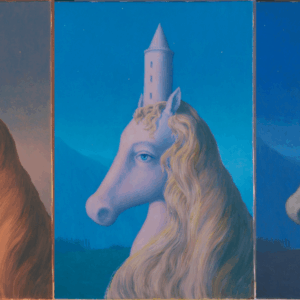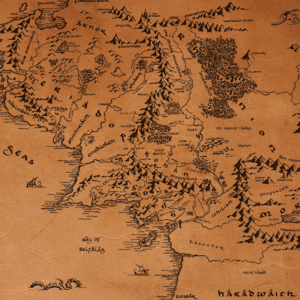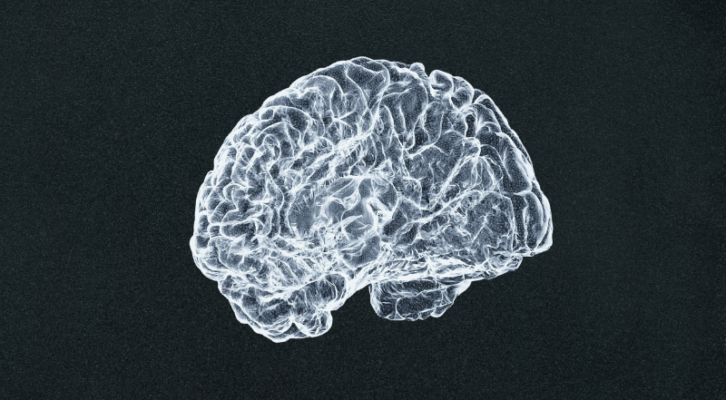
How the Human Brain Actually Gets Us From Point A to Point B
John Edward Huth on the Cognitive Maps Inside Our Brains
“Where are you going with this?”
“I’m not following you”
“You seem so distant”
“That’s all behind us now”
“My mind is wandering”
We often use the language of navigation through physical space to describe how we move through time, with the past “behind” us, and the future “ahead.” It is as if our motion in time is a stroll. Likewise, many of us use language of motion and position in social contexts. Physical proximity stands in for intimacy. We say that a couple is close or have split apart. Or engagement, “You seem distant.” Social status is associated with height: “getting in on the ground floor” or “I have to speak with my higher-ups.”
Physical navigation—getting from one place to another—is fundamental to life. Iron-fixing bacteria will swim in the direction of the Earth’s magnetic field. Arctic terns will migrate from the Arctic to the Antarctic and back again every year. Humans have managed to explore and inhabit nearly every niche of the planet. Not surprisingly we all have the inbuilt smarts to purposefully find our way. But physical migration is only one part of what it means to be human. We live in cultures that have structures and people that we must also navigate if we’re to live a purposeful life.
Life is a journey and much of our imagination also occupies a kind of mental space, searching for a path.
We navigate websites, we escape from traps laid. We generalize the concept of finding our way to all sorts of situations. If someone is behaving erratically, we say that they’ve lost their bearings or slipped their moorings. We speak of following a moral compass.
Life is a journey and much of our imagination also occupies a kind of mental space, searching for a path. Stories, dreams, movies, poetry, and songs exist in real or imagined landscapes. When we speak of “being between a rock and a hard place,” we are invoking Homer’s voyage of Ulysses and the passage between Scylla, the cliff-dwelling monster, and the whirlpool Charybdis.
If you’re aware of the parallel metaphors of spatial and social language, it sometimes becomes difficult to hold a conversation of any length of time (see?) without invoking the language of navigation. When my students and I began to discuss spatial metaphors in a seminar, it became extremely halting as every accidental use of a spatial indicator caused laughter. We can’t get anywhere without using this language.
In Metaphors We Live By, by psychologists George Lakoff and Mark Johnson, a chapter is devoted to the spatial/social metaphors in the English language. My work with anthropologists demonstrated to me that this was quite common in other languages as well. There is an increasing belief among some cognitive psychologists that the parts of the brain associated with spatial reasoning are also engaged in social reasoning. This parallelism may be a hint as to why spatial expressions are used widely in a social context. To understand the possible parallelism and gain some perspectives, I first turn to how neuroscientists and cognitive psychologists believe our minds organize space.
While there are ways we perceive space internally, there is also the actual physical space the brain occupies in our cranium. The brain has different regions that serve specific purposes. For example, the auditory cortex on the side of the brain near the ear analyzes sound. There are longer connections of neurons that link these many specialized regions together into what we might perceive as the core of our being or consciousness. Specifically, the seat of our mental map lies in a part of the brain called the limbic system. Some call this region the “reptilian brain” because it is far older, in an evolutionary sense, than the outer neocortex found in mammals.
The limbic system has two neighboring regions, the hippocampus and the entorhinal cortex, both of which are implicated in spatial cognition. These are indicated in figure 1.1. Much of what we do know comes from experiments on animals where neuroscientists implant electrodes in their brains and then monitor individual cells that light up when the animal engages in certain behaviors. In addition to this, we can learn from humans who suffer damage to parts of their brains and infer some functionality.
For our internal map: in the hippocampus there are cells called “place cells,” neurons that are activated when a person or animal is in a specific location in an environment that they are familiar with. In the neighboring entorhinal cortex there are “grid cells” that are activated when the individual is in multiple locations in an environment that are regularly spaced, like the tiling on a floor or the backsplash of a sink. Both the hippocampus and the entorhinal cortex have dense interconnections of neurons linking the two together. As of now, we do not know precisely how this combination of grid and place cells act to create a mental map. This is an intense ongoing study and there are many conjectures.
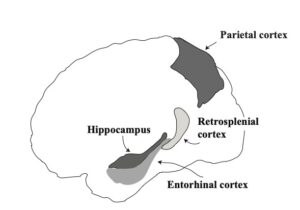
What does the mental representation of space look like? Psychologist Edward Tolman asked this question in a 1948 paper, where he speculated that there are two possible forms of a mental spatial map. One kind is called “route knowledge,” where space is represented as a series of possible paths, and the navigator knows only the paths and their interconnections. Another kind of mental map is called “survey knowledge,” where space is laid out as if you are hovering over a landscape and can see all the possible two-dimensional interconnections at once.
Figure 1.2 shows a map of a portion of Lower Manhattan. The organization of streets in much of Manhattan is on a grid system of avenues running approximately north–south, and numbered streets running approximately east–west. The grid breaks down in Lower Manhattan and the streets begin to look higgledy-piggledy and more challenging to navigate.
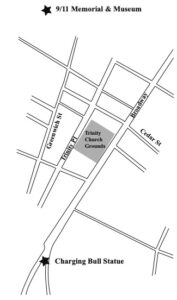
How can you tell the difference between route and survey knowledge in the behavior of an individual? Short-cutting!! That is to say, finding a new path that may not be on your “list” of available paths. Say you’re a tourist on your own looking at the sites in Lower Manhattan. You start out with a selfie next to the Charging Bull statue, but then want to visit the 9/11 Memorial, some 10 minutes’ walk away. Armed with a plastic-coated map, or slavishly following your cellphone directions, you move approximately in the direction of the Memorial. First up Broadway, and then take a left onto Cedar. We would call this route knowledge (fig. 1.3).
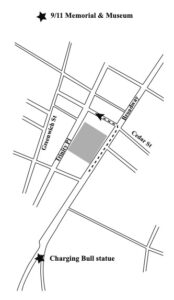
Now, suppose instead of going solo, you have a friend familiar with Manhattan accompany you on your sightseeing tour. You two pose for a photo next to the Charging Bull and then begin the walk toward the 9/11 Memorial. Walking down Broadway, your friend sees that the grounds for the Trinity Church are open and suggests cutting across to slice a minute off the walk, and thus take in another sight in Lower Manhattan. We would call this survey knowledge, where your friend is aware of the shortcut (fig. 1.4).
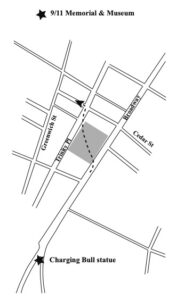
Now, back to Edward Tolman’s experiments with route and survey knowledge. He tested the possibility of route versus survey knowledge in a classic rats-in-a-maze experiment. Tolman first trained rats to navigate from an opening to a food source in a maze. The rats learned the path to the food source. Then Tolman changed the maze in a way that allowed a more direct pathway to the food. There were many possible paths presented, including one that mimicked the original. The rats chose a more direct path, indicating that they possessed survey knowledge of their environment.
The hippocampus is also implicated in a number of mental activities beyond cognitive maps.
We have multiple cognitive maps depending on our environment. Think back to the area you originally grew up in, or the layout of your primary school. Depending on the circumstances, your mind can call up the map for the envisioned environment. These multiple maps can lead to interesting situations. One of these I call the waking up-in-a-strange-bed-in-the-dark problem.
Suppose you’re traveling and are staying in a hotel in a faraway city. You wake from a dream, which, itself, has its own imaginary landscape. In the dark your first instinct is to believe that you’re in your home bed, but something isn’t right. You reach for the light switch or some familiar object on the bedside, but it’s not where it’s normally located. There’s a moment of confusion and then everything falls into place, and you think, “Oh yes, I’m in X-and-such location, and I’m on the other side of the bed from where I normally sleep.”
I had the strange experience of witnessing my brain “trying on” different cognitive maps for a good fit. To some extent, I attribute this to a nighttime cold remedy that gave me strange dreams. I had dreams within dreams within dreams and would wake up from one dream and think I was back into reality, only to discover I was in another dream. Each dream bore its own landscape.
Then, in the morning, while I was half-asleep, half-awake, I heard the familiar pattern of the sounds of my daughter opening her bedroom door, walking down the hallway, and entering and closing the bathroom door. From this sequence, I “knew” I was now inhabiting reality and not another dream, but where was that? In a strange state of mindfulness, I could witness my brain as it tried out different cognitive maps.
First, it tried on my old bedroom from when I was a ten-year-old boy. No, that wasn’t a good fit. Then it tried on my house in suburban Chicago when I worked at an accelerator laboratory. No, that wasn’t a good fit either. Then it tried on my house in Newton, Massachusetts, and suddenly the room spun around, and everything fit perfectly. The map stabilized.
The hippocampus is also implicated in a number of mental activities beyond cognitive maps. One of the most noteworthy of these functions is called episodic memory. This is when the individual retrieves a memory as an act of will. If, for example, I ask you to name your favorite high school teacher, you go into the files of your mind to retrieve the name, and likely the face of that teacher. Sometimes this takes time, and you might respond by saying, “I can see their face but forget their name off the top of my head.”
It may not seem obvious that memories and a mental image of an environment would reside in the same part of the brain, but they both share things in common: relations and a sense of proximity. Memories come in categories, like the names of teachers you may have had or long-lost loves. You might “stroll down memory lane” or say that you’ve lost your “train of thought.” There is an emergent view among cognitive psychologists that episodic memories are intrinsically visual in nature and, effectively, the brain is re-tasking the navigational parts that include knowing landmarks and their relative positions as a means of organizing memories.
__________________________________
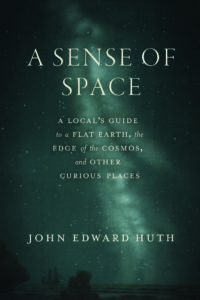
From A Sense of Space: A Local’s Guide to a Flat Earth, the Edge of the Cosmos, and Other Curious Places. Used with the permission of the publisher, University of Chicago Press. Copyright © 2025 by John Edward Huth.
John Edward Huth
John Edward Huth is the Donner Professor of Science at Harvard University. He has done research in experimental particle physics since 1980 and is currently a member of the ATLAS collaboration at the European Center for Nuclear Research (CERN). He participated in the discovery of the top quark and the Higgs boson and is the author of The Lost Art of Finding Our Way.
















